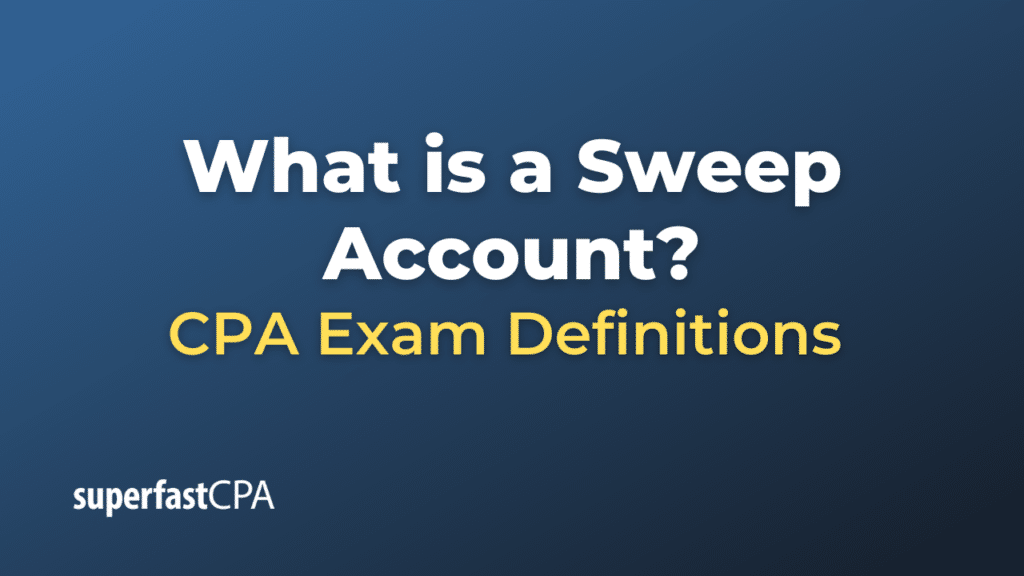Sweep Account
A sweep account is a type of bank account that automatically transfers amounts exceeding (or short of) a certain level into a higher interest-bearing investment option at the close of each business day, commonly known as the “sweep.” The primary goal is to ensure that any excess cash is put to work, often by earning interest, rather than sitting idle in a regular checking account.
The mechanics work as follows:
- At the end of each business day, the bank examines the account’s balance.
- If the balance is above a specified amount, the excess money is “swept” into a higher interest-bearing investment, such as a money market fund.
- If the balance falls below a specified amount, funds are swept back from the investment into the checking account to maintain the desired balance.
Sweep accounts are typically used by businesses to optimize the management of their liquidity, ensuring that any excess cash is invested, even if just overnight, to earn a return. They are also used by some individual investors as a cash management tool.
Example of a Sweep Account
Let’s delve into a detailed example of how a sweep account might be used by a small business:
Scenario:
Green Gardens LLC, a landscaping company, opens a business checking account and an associated sweep account with its bank. The bank offers an automatic service where excess funds above a predefined threshold in the checking account are “swept” into a higher interest-bearing account at the close of each business day.
Agreement with the Bank:
Green Gardens decides to maintain a minimum balance of $10,000 in its checking account to cover daily operational expenses. Any amount above this will be automatically moved to the sweep account to earn higher interest.
Day 1:
- Opening balance: $9,000
- Payments received from clients: $8,000
- Bills and operational costs paid: $3,000
Closing balance in the checking account at end of day: $9,000 + $8,000 – $3,000 = $14,000.
Given the $10,000 threshold, $4,000 will be automatically swept into the interest-bearing account at the close of the day.
Day 2:
- Opening balance (after the sweep): $10,000
- Payments received from clients: $5,000
- Bills and operational costs paid: $12,000
Closing balance in the checking account at end of day: $10,000 + $5,000 – $12,000 = $3,000.
Now, Green Gardens is $7,000 short of its desired threshold. The bank will automatically “sweep” $7,000 from the interest-bearing account back into the checking account to meet the $10,000 target.
Outcome:
By using the sweep account, Green Gardens can ensure it earns interest on excess cash without compromising its operational needs. This system allows for both efficient cash management and maximized interest income.
This example illustrates the flexibility and benefit of using a sweep account. With automatic transfers, businesses can ensure their money is working for them as effectively as possible without micromanaging their funds daily.













